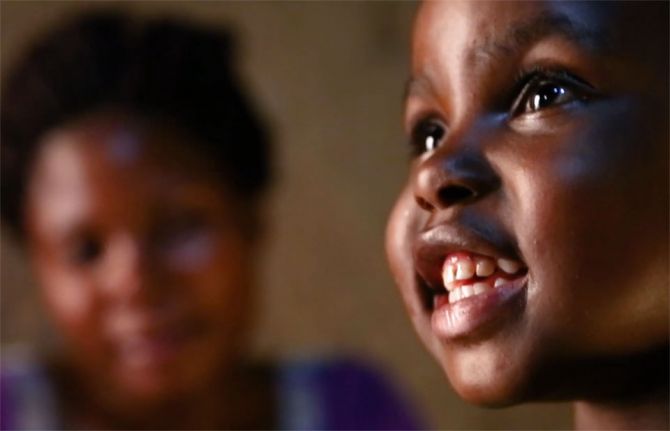

Press Release
UNAIDS urges sub-Saharan African countries and global partners to ensure children living with HIV are on life-saving treatment and to stop new infections
14 June 2024 14 June 2024GENEVA, 14 June 2024—On the International day of the African Child this 16 June, UNAIDS is urging African governments and global partners to provide treatment for children living with HIV and to stop new infections among children. The latest data show that only 56% of children living with HIV were on life-saving antiretroviral therapy in 2022 in sub-Saharan Africa compared to 83% of adults globally. Without access to treatment, 50% of infants living with HIV will die before their second birthday.
“As sub-Saharan Africa continues to carry the highest burden of HIV, children are not spared. Over 1.3 million children are living with HIV in the region and too many do not have access to life-saving treatment,” said Ms Winnie Byanyima, Executive Director of UNAIDS. “This highlights the urgency with which we need to tackle this pandemic among children and ensure access to life-saving treatment. No child should be left behind.”
Children are among the age group hardest to reach with HIV testing which is hampering efforts to diagnose and treat children living with HIV. Around 70 000 children died of AIDS-related illnesses in 2022 in sub-Saharan Africa because they did not have access to antiretroviral treatment.
In addition, many children are still becoming infected with HIV in sub-Saharan Africa. Across sub-Sharan Africa, around 110 000 children became infected in 2022 alone. While some countries like Namibia, which has recently reached a key milestone in the pathway toward eliminating vertical transmission of HIV and hepatitis B, are making fast progress, this is not the case in many other countries, particularly in Western and Central Africa including Nigeria, Ghana, Cameroon and the Democratic Republic of Congo which still account for some of the highest numbers of children newly infected with HIV.
“We know the path that ends AIDS. With all the science available, there is no reason for any child to die of AIDS in 2024. So too, we can ensure that all babies are born HIV free and stay HIV free. It is vital to ensure that pregnant and breastfeeding women have all the support they need to access medicine to avoid the transmission of HIV to babies while mothers are pregnant and breastfeeding,” said Ms Winnie Byanyima. “We need to redouble efforts in countries to end AIDS in children and close the HIV treatment gap between adults and children.”
Countries are working to end AIDS in children and this work is supported by the work of UNAIDS and its Cosponsors including UNICEF, the World Health Organization, and partners including PEPFAR, the Global Fund, the Elizabeth Glaser Pediatric AIDS Foundation (EGPAF), the Gates Foundation, Global Alliance to End AIDS in Children and others.
UNAIDS
The Joint United Nations Programme on HIV/AIDS (UNAIDS) leads and inspires the world to achieve its shared vision of zero new HIV infections, zero discrimination and zero AIDS-related deaths. UNAIDS unites the efforts of 11 UN organizations—UNHCR, UNICEF, WFP, UNDP, UNFPA, UNODC, UN Women, ILO, UNESCO, WHO and the World Bank—and works closely with global and national partners towards ending the AIDS epidemic by 2030 as part of the Sustainable Development Goals. Learn more at unaids.org and connect with us on Facebook, Twitter, Instagram and YouTube.
